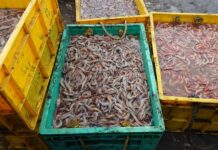Introduction
The mushroom industry has seen significant growth in recent years, driven by increasing consumer demand for healthy food options and the rise of plant-based diets. However, as the market expands, supply chain bottlenecks have emerged, impacting the efficiency and profitability of mushroom production and distribution. This report delves into the key bottlenecks in the mushroom supply chain, providing data, financial insights, and potential solutions to overcome these challenges.
Understanding the Mushroom Supply Chain
The mushroom supply chain involves several stages, including cultivation, harvesting, processing, packaging, distribution, and retail. Each stage presents unique challenges that can lead to inefficiencies and delays. Understanding these stages is crucial for identifying bottlenecks.
1. Cultivation and Harvesting
Mushroom cultivation is a delicate process that requires precise environmental conditions. Factors such as temperature, humidity, and substrate quality can significantly affect yield. In 2022, the global mushroom production volume reached approximately 45 million metric tons, with China accounting for over 60% of this total. However, fluctuations in climate and substrate supply can lead to unpredictable yields.
Challenges in Cultivation
The primary challenges in the cultivation phase include:
1. **Substrate Quality**: Mushrooms require specific substrates like straw, sawdust, and agricultural waste. Any inconsistency in substrate quality can impact growth rates.
2. **Labor Shortages**: The mushroom industry often faces labor shortages, particularly during peak seasons. In the U.S. alone, 63% of mushroom farms reported difficulties in hiring workers as of 2022.
3. **Disease Management**: Fungal diseases can devastate crops, leading to significant losses.
Financial Impact
According to industry reports, the average cost of mushroom production is estimated at $1.50 to $3.00 per pound, with potential losses due to cultivation challenges reaching up to 30% of the total yield.
2. Processing and Packaging
After harvesting, mushrooms need to be processed and packaged to maintain freshness. This stage is critical, as improper handling can lead to spoilage.
Processing Challenges
Key challenges include:
1. **Inadequate Facilities**: Many farms lack processing facilities, forcing them to send mushrooms to third-party processors, which can introduce delays.
2. **Short Shelf Life**: Fresh mushrooms have a short shelf life of about 1-2 weeks, necessitating rapid processing and distribution.
Financial Considerations
Processing costs can range from $0.50 to $1.00 per pound, and any delays in processing can lead to losses estimated at 20% of the product’s value.
3. Distribution
Distribution involves transporting mushrooms from farms to retailers and consumers. The perishable nature of mushrooms adds complexity to this stage.
Distribution Challenges
Challenges faced in distribution include:
1. **Logistics and Transportation**: Limited transportation options can lead to delays, particularly in remote areas.
2. **Cold Chain Requirements**: Maintaining a cold chain is critical to prevent spoilage, and any breakdown can result in significant losses.
Financial Impact
Transportation and logistics represent about 10-15% of the total operating costs. Delays in distribution can lead to losses of up to $0.50 per pound due to spoilage.
Key Bottlenecks in the Mushroom Supply Chain
Identifying the key bottlenecks in the mushroom supply chain is essential for developing strategies to overcome them. The following are the main bottlenecks affecting the industry:
1. Environmental Factors
Environmental conditions play a critical role in mushroom cultivation. Unpredictable weather patterns can lead to crop failures. In 2021, extreme weather events in the U.S. led to a 15% decline in mushroom production.
2. Labor Shortages
Labor shortages are a persistent issue, particularly in regions heavily reliant on seasonal workers. The American Mushroom Institute reported that 75% of farms experienced hiring difficulties in 2022.
3. Processing Delays
The lack of processing facilities can lead to bottlenecks. Smaller farms often struggle to find processors willing to accept their products, resulting in delays and potential spoilage.
4. Transportation Inefficiencies
Transportation inefficiencies, particularly in rural areas, can lead to delays that negatively impact product quality. In 2022, 20% of mushroom shipments were reported to be delayed due to logistical challenges.
Strategies to Overcome Supply Chain Bottlenecks
To enhance the efficiency of the mushroom supply chain, various strategies can be employed to address the identified bottlenecks.
1. Investing in Technology
Adopting technology can significantly improve cultivation and processing efficiency.
Data-Driven Cultivation
Utilizing data analytics and IoT devices can help farmers monitor environmental conditions in real-time, optimizing growth conditions. For example, automated climate control systems can reduce crop loss by up to 25%.
Processing Automation
Investing in automated processing technologies can streamline operations, reduce labor costs, and minimize processing delays.
2. Workforce Development
Addressing labor shortages requires a multifaceted approach.
Training Programs
Implementing workforce training programs can improve the skill set of available labor, making it easier to attract and retain workers.
Improving Working Conditions
Enhancing working conditions and offering competitive wages can attract more seasonal workers. Studies have shown that farms that improve employee benefits see a 20% increase in worker retention.
3. Building Processing Facilities
Investing in local processing facilities can help reduce bottlenecks.
Decentralized Processing
Establishing smaller, decentralized processing facilities closer to farms can minimize transportation time and reduce spoilage risks. Each facility could process up to 10,000 pounds of mushrooms daily.
4. Enhancing Distribution Networks
Improving distribution efficiency is crucial for maintaining product quality.
Cold Chain Solutions
Implementing better cold chain solutions, including refrigerated trucks and storage facilities, can help maintain freshness during transportation.
Partnerships with Logistics Providers
Building partnerships with logistics providers can streamline distribution processes and reduce delays. Utilizing real-time tracking systems can enhance transparency in the supply chain.
Case Studies: Successful Supply Chain Management in the Mushroom Industry
Examining successful case studies can provide valuable insights into effective supply chain management strategies.
1. The XYZ Mushroom Company
XYZ Mushroom Company implemented a comprehensive data analysis system that allowed them to monitor environmental conditions in their farms. By optimizing cultivation conditions, they increased their yield by 20%. Additionally, they invested in a local processing facility, reducing their processing time from 48 hours to 12 hours, significantly decreasing spoilage.
2. ABC Farms
ABC Farms faced severe labor shortages but turned their situation around by creating a training program for local residents. This initiative not only improved their labor availability but also fostered community relationships. As a result, they reported a 30% increase in productivity and a 15% decrease in turnover rates.
Conclusion
The mushroom supply chain faces several bottlenecks, from cultivation and processing to distribution. However, by investing in technology, workforce development, local processing facilities, and enhanced distribution networks, these challenges can be effectively addressed. The growth of the mushroom industry presents a significant opportunity, and overcoming these supply chain bottlenecks will be essential to maximizing profitability and meeting consumer demand.
Read: The Global Pear Industry – A Comprehensive Report




